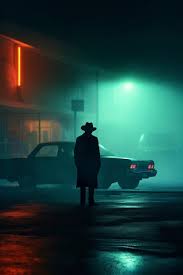When searching for “Thomas Sullivan Roadkill”, you might come across various references that connect the name Thomas Sullivan to the theme of “roadkill”—sometimes in literature, sometimes in art, sometimes in unexpected cultural spaces. To understand the significance of this connection, it’s worth diving into multiple dimensions: who Thomas Sullivan is (and the many people by that name who might intersect with this topic), what roadkill symbolizes in literature and culture, and why this combination of terms carries such a lasting fascination.
This blog post will unpack the story and symbolism behind Thomas Sullivan Roadkill, offering insights into art, environmental awareness, and cultural commentary—while providing readers with a deep 1000+ word exploration of the subject.
Who Is Thomas Sullivan?
The name Thomas Sullivan is not uncommon, but in creative and literary circles, it is most associated with Thomas Sullivan, the American author. Born in 1949, Sullivan has written award-winning novels and short stories that often explore the darker, stranger edges of human existence. His works tend to blur the lines between reality and allegory, making his style uniquely memorable.
In his explorations of human behavior, Sullivan often uses unexpected symbols—violence, decay, survival, and transformation—to reflect on life. This is where the idea of roadkill can be seen as deeply connected: not just as a literal tragedy on highways, but as a metaphor for modern society and human fragility.
At the same time, there are other cultural references where the term roadkill appears alongside the name Thomas Sullivan, whether in artistic projects, music references, or environmental activism. Because of this, Thomas Sullivan Roadkill has become a phrase rich in layers of meaning.
Roadkill as Symbolism
Roadkill, in its simplest sense, refers to animals struck and killed by vehicles. But beyond the literal, it has become a cultural metaphor for many things:
- Collateral Damage of Progress
- Highways symbolize speed, modernization, and efficiency. Roadkill represents what gets lost along the way—wildlife sacrificed to human expansion.
- The Fragility of Life
- A sudden accident transforms life into death. Roadkill highlights the delicate boundary between existence and oblivion.
- Dark Humor and Absurdity
- In literature, music, and even comics, roadkill is sometimes used with dark humor to highlight life’s randomness and absurdity.
- Environmental Awareness
- Roadkill has become a topic in environmental campaigns, reminding us of the ecological costs of highways cutting across natural habitats.
When combined with Thomas Sullivan’s writing style—marked by themes of mortality, irony, and the human condition—it’s easy to see how roadkill becomes not just a word but a lens through which to interpret his work.
Thomas Sullivan’s Exploration of Darkness
While Sullivan may not have an entire novel dedicated to roadkill itself, his literary approach resonates with the idea. He often portrays characters who are:
- Broken down by life, much like animals struck by cars.
- Survivors of accidents, violence, or unforeseen events.
- Trapped between civilization’s promises and its brutal realities.
In one sense, Thomas Sullivan Roadkill can be viewed as shorthand for his narrative style—stories of those left behind, discarded, or damaged by the relentless march of society.
Roadkill in American Literature and Culture
To better understand Sullivan’s potential connection, we need to look at roadkill as a motif in American culture:
- Jack Kerouac’s On the Road (1957)
- Though not directly about roadkill, Kerouac’s road novel deals with the disillusionments of modern America. Roadkill becomes a symbolic companion to that journey.
- Pop Culture and Roadkill Comedy
- Roadkill jokes, cartoons, and parodies (like Gary Larson’s The Far Side comics) have long used the image as dark comedy.
- Music References
- Bands and musicians have used “roadkill” as an album or song title to express themes of destruction, chaos, and living on the edge.
- Documentary and Environmental Studies
- Biologists study roadkill as an indicator of species endangerment and human impact on nature.
Within these contexts, a writer like Thomas Sullivan could use roadkill imagery to critique human carelessness, highlight existential absurdities, or confront ecological truths.
The Metaphor of “Being Roadkill”
When people say they feel like “roadkill,” they usually mean they feel run over by life—burned out, forgotten, or destroyed by circumstances beyond their control. Sullivan’s narratives often put readers into the shoes of such characters, making “roadkill” a perfect descriptor of his themes.
- In Personal Struggles: Roadkill represents people ground down by trauma, stress, or injustice.
- In Society: Roadkill can symbolize marginalized groups left behind by mainstream progress.
- In Philosophy: Roadkill becomes a metaphor for the absurdity of existence and the inevitability of death.
Roadkill as Art
Interestingly, artists have used literal roadkill in creative expression. Sculptors, photographers, and even performance artists have incorporated images or remains of roadkill into their work. While controversial, the intent is often to force reflection on the brutality of human impact.
If we think of Thomas Sullivan Roadkill in this vein, it can represent:
- A literary installation, much like visual art, where decay and destruction are made meaningful.
- A provocation, pushing readers to confront what they would rather ignore.
- A mirror of modern life, where beauty and horror coexist.
Roadkill and Environmental Ethics
Beyond literature and art, roadkill is a serious environmental issue. Millions of animals die each year on roads worldwide. This is not just tragic for biodiversity but also disrupts ecosystems.
Conservationists often propose:
- Wildlife crossings (bridges/tunnels for animals).
- Driver awareness campaigns.
- Better urban planning to reduce habitat fragmentation.
In this sense, Thomas Sullivan Roadkill could also represent a call to awareness—using art and storytelling to shine a light on the ecological consequences of our choices.
Why Does “Thomas Sullivan Roadkill” Resonate?
There are several reasons why this phrase captures attention:
- It’s Unexpected – The combination of a human name with something as grim as roadkill sparks curiosity.
- It’s Symbolic – It connects human experience with the brutal randomness of nature.
- It’s Artistic – It can be read as a metaphor, a literary theme, or even an environmental message.
- It’s Memorable – The phrase lingers in the mind, much like Sullivan’s own works that leave readers unsettled but thoughtful.
Final Thoughts
At its heart, Thomas Sullivan Roadkill is more than just a curious phrase. It symbolizes the intersection of literature, culture, and ecology. It reflects on:
- The fragility of life.
- The consequences of human progress.
- The dark humor and absurdity that often defines both reality and storytelling.
Whether you view Thomas Sullivan as a writer whose themes resonate with the metaphor of roadkill, or whether you interpret the phrase as a cultural commentary on modern life, the result is the same: it forces us to confront uncomfortable truths.














